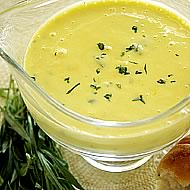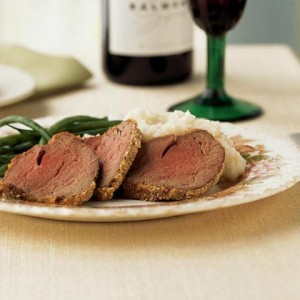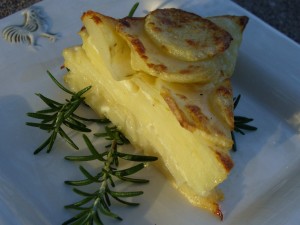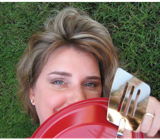
One of Sandy’s suggestions for a lovely accompaniment to the elegant Chateaubriand is a savory béarnaise sauce.
It’s a traditional sauce for any kind of steak or beef, but it’s especially appreciated on a beautiful cut of beef like Chateaubriand.
Here’s what she said . . .
A quick béarnaise recipe adapted from Craig Claiborne’s The New York Times Cook Book: (the tarragon reduction is exactly what I remember from making this sauce in much larger quantities in cooking school).
2 tablespoons white wine
1 tablespoon tarragon vinegar
2 teaspoons chopped fresh tarragon
2 teaspoons chopped shallot or onion
1/4 teaspoon pepper
In a small saucepan, bring the ingredients above to a boil and cook until almost all of the liquid disappears. This will only take a few minutes, and will be very strong smelling (i.e. don’t put your nose directly over it). This is the typical flavoring agent of béarnaise and can be added to 1 cup of your favorite hollandaise, or use the following to create that:
Place 3 egg yolks, 2 tablespoons lemon juice, 1/4 teaspoon salt and a pinch of cayenne pepper in a blender container. Combine by pulsing the motor on and off until combined and frothy. Never let acid (lemon juice) or salt sit on raw egg yolks without mixing them in – it will “cook” the egg yolks and give you unwanted lumps in your sauce.
Add one stick unsalted real butter to the herb mixture sauce pan and heat to bubbling, not browning. Remove from heat.
Turn the blender back on and blend the egg yolk mixture until frothy and lighter colored, then with the blender running carefully add the hot herb/butter mixture to the yolks and blend on high speed for 4 seconds.
Remove to clean thermos container unless you are ready to serve immediately.
This sauce cannot be reheated, or it will break (separate).
Very traditionally, this sauce would be served alongside the Chateaubriand in the (cooked and warmed) heart of an artichoke for each person.
I love how Sandy always walks me through the landmines I might encounter — like putting my nose directly over the bubbling sauce. I would have totally done that.
And the storing of the sauce in a thermos until the meal is ready to be served is pure genius. I would not/could not have come up with that sauce-saving technique.
Try this graceful sauce served in lovely artichoke hearts with your next beef-featured meal and let me know how it turns out for you!
Photo courtesy of uktv.co.uk



